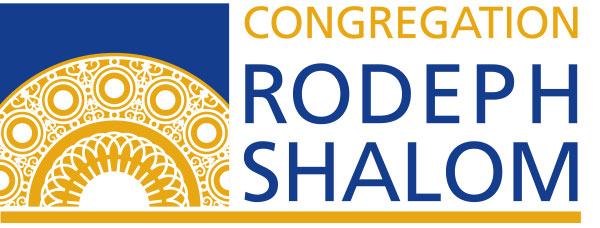At this week’s seder, Jews recited “Once we were slaves.” Who, today, is still vulnerable to the shackles of injustice? I recently learned about a sex trafficking awareness initiative of the Women of Vision, a part of the Jewish Federation of Greater Philadelphia. I am grateful to the Federation for shining a light on women’s inequality, vulnerability and grave injustices involved in modern slavery.
It is common to assume human trafficking is a far-off problem. Such distance can make it easier to ignore. But that’s just not the case. The more survivor stories I read, the more I can imagine these victims living right in my city. According to statistics, chances are, they do.
This fall, the Bucks County Courier Times reported on a woman named Jennifer Spry. Spry grew up in suburban, middle-class Montgomery County and as an 8-year old, was allowed to walk to the Church playground just down the road, playing so close to her home that she could hear her mother call her for dinner. While playing in what was practically an extension of her own yard, Spry was manipulated by a neighbor offering toys. Once she was in his home, she was forced to allow his “clients” to perform sexual acts while he took photographs. The neighbor told Spry that if she ever told, he would kidnap her sister and murder her mother.
When Spry had bruises or seemed withdrawn, neither parents nor doctors nor teachers could find the words that would make her feel protected enough to talk. The trafficking continued to go on day in and day out after school, with Spry making it home to dinner each night. It wasn’t until the trafficker moved away that the abuse ended and she began to seek help and recovery.
Jennifer Spry is not alone. The U.S. State Department estimates that 600,000-800,000 people are victims of human trafficking in the U.S. annually, 100,000 -300,000 of which are children. The numbers, easily too low because the crimes are so underreported, include three categories: sex trafficking, labor trafficking and minors.
The Jewish Council for Public Affairs’ Resolution on Combating Human Trafficking in the United States distinguishes: Sex trafficking can occur in massage parlors, brothels, strip clubs, and escort services and can be found on the internet or on the street. Victims are often lured by false promises and ultimately forced into prostitution. Not all of those engaged in sex work are trafficked, but many are. Labor trafficking victims can be nannies, maids, in sweatshops, janitorial jobs, restaurants, hair and nail solons, construction sites and farms. Victims are trapped in a cycle of involuntary servitutde, debt bondage and slavery. Minors make up more than half the world’s trafficking victims. Minors are usually the victims of domestic sex trafficking and include males and females of all ethnicities and demographics, especially within vulnerable populations such as those in the foster care system, runaways and immigrants. Most sex trafficking victims are female and the average age is 13.
A growing understanding of human trafficking has led to positive initiatives such as President Obama’s Interagency Taskforce to Monitor and Combat Human Trafficking which has coordinated the work. An increasing movement of advocates for passage and full funding of legislation to address trafficking has gained traction. And center such as Philadelphia’s Dawn’s Place have had great in supporting survivors in their recovery.
Whether traffickers recruit children or adults, in malls, on the street or online, these task-masters continue to do the work of Pharaoh. They prey on the vulnerable, they seed shame and self-blame, and they destroy lives.
Even as this week we celebrate our great story of liberation with the festival of Passover, so may we remember that in all corners of the earth and even in our own neighborhoods, there are those who still live in emotional and physical bondage. The Haggadah teaches us: “In every generation all of us are obligated to regard ourselves as if we ourselves went forth from the land of Egypt.” Why remember that not only our ancestors, but we—you and I—were freed slaves? Perhaps so that we may open our hearts to all of those in every age, from every race, nation, background and experience, who are vulnerable to the shackles of injustice. Perhaps so that we may shine a light on their stories and understand, they are us.
To deepen your understand of modern slavery, learn about legislative advocacy you can take and hear from Jennifer Spry, consider attending the Women of Vision program at the Jewish Federation, 2100 Arch St: *“Once We Were Slaves: Understanding Modern Day Sex Trafficking in Our Community,” Wednesday, April 22, 12:00pm-2:00pm, $36 includes lunch. Additional resources include the Polaris Project website and the books: Walking Prey by Holly Austin Smith, Half the Sky by Nicholas Kristof and Sheryl WuDunn and Bodies and Soul by Isabel Vincent.
